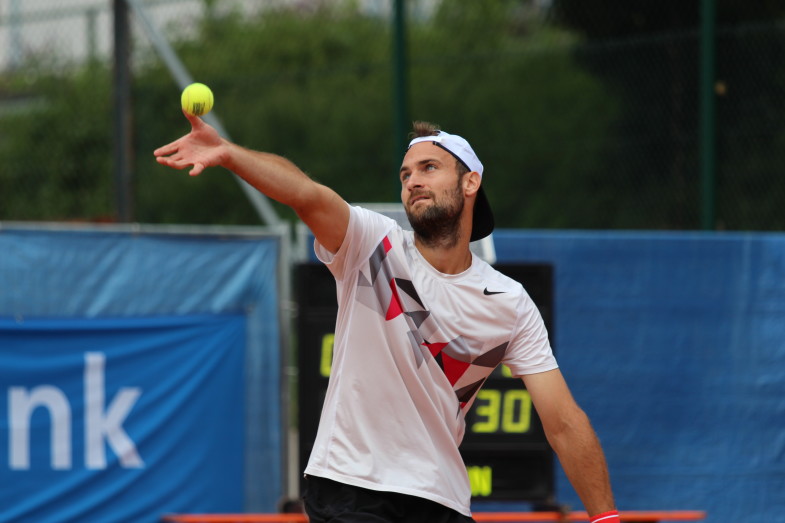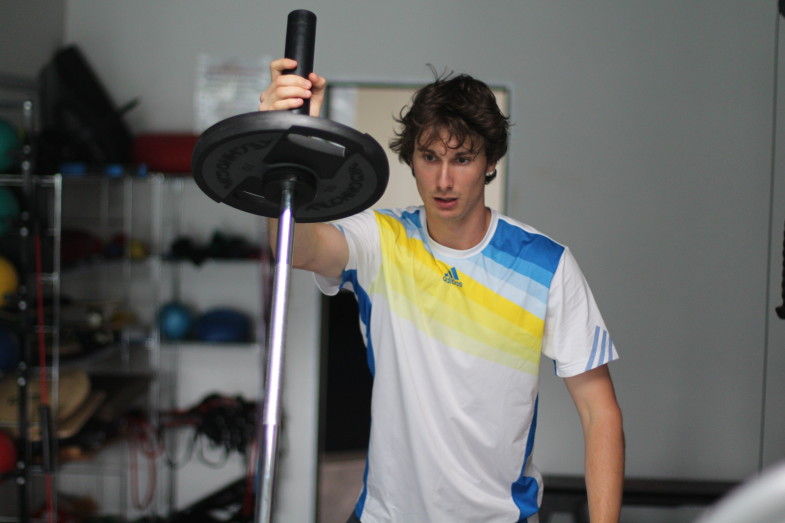Core training is important because it positively affects your power output.
Why Core Training?
Everything in land-based sports is ground driven, meaning the athlete pushes off the ground and transfers energy through the kinetic (movement) chain in order to exert force to e.g. hit the tennis ball.
The reason that the core is relevant is because there are the most connecting points in the movement chain. This means that there is the highest potential for energy “leakage”, which consequently leads to a decrease in force production. Therefore, strengthening the core makes sense.
Bottom-Up Energy Transfer

Since tennis is ground driven, athletes conceptually start with 100% of potential energy at the feet (bottom-up energy transfer).
As the athlete starts the motion (e.g. hits a serve) and releases the ball he/she is transferring energy through their body via the kinetic chain:
- ankles
- knees
- hips
- core
- shoulder girdle
- elbow
- wrist
Depending on how efficient the athlete can transfer energy from the ground through the body the speed of the tennis ball will be affected: the more energy can be transferred, the harder the ball can be hit.
Factors Impacting Stroke Production

How much energy can be conserved and applied at the point of contact depends on how effectively the energy can be transferred through the body (the joints that make up the movement chain) and then applied to the object (ball).
In other words, the velocity of the tennis ball, available energy and overall impact of the serve is going to be determined by:
- how much force can be generated from the athlete’s feet
- how much gets transferred through the body (core)
- how much of that energy gets applied to the ball
So, if there is an athlete that is very efficient in energy transfer then he/she might achieve (e.g.) 85% of that initial energy (feet) at the point of contact, which means a high serve velocity.

On the other hand, is an athlete rather inefficient with transferring energy through the body then energy will be “lost” during the movement chain and he/she might only be able to apply (e.g.) 50% of the initial energy, which means a low serve velocity.
Now, in theory the potential in the athlete’s body is 50% greater than what he/she is producing. This can explain why there are some athletes that can “only” hit 110mph on their first serve but once their form got better and they are conditioned properly then they increase to 130 – 140mph serves.
These potential exist; you just have to get to them and that is the premise behind conditioning, weight lifting and core training!
Landmine Core Training Circuit
Following you’ll find a landmine core training routine you can do on your own. The exercises are great since you can adjust the resistance to your training needs and the exercises also challenge the legs, core and shoulders.
You might want to get the dual landmine core trainer before you start your core training.
Training Zone
In this section we provide you with some more workouts you may be interested in to optimize your training:

